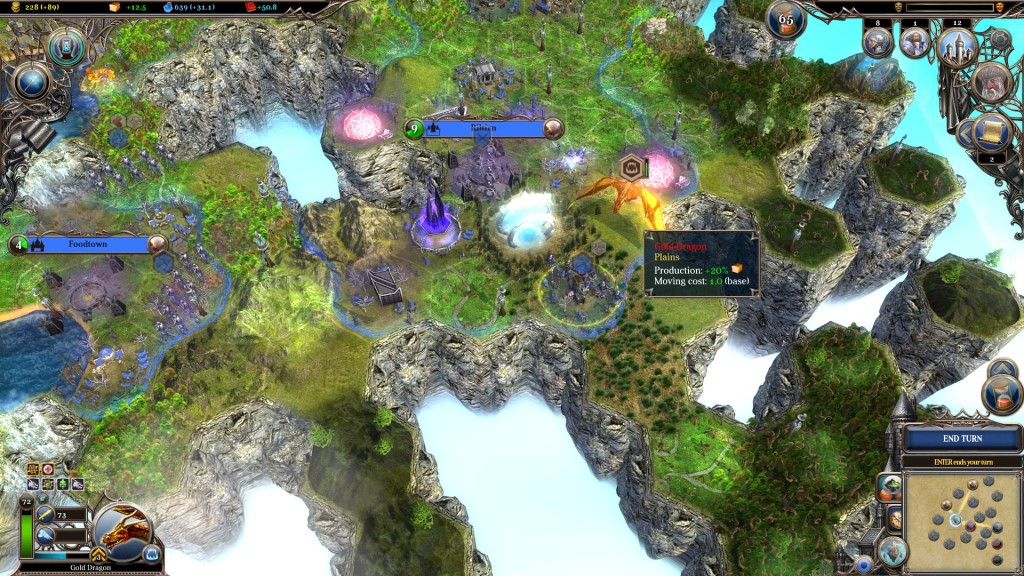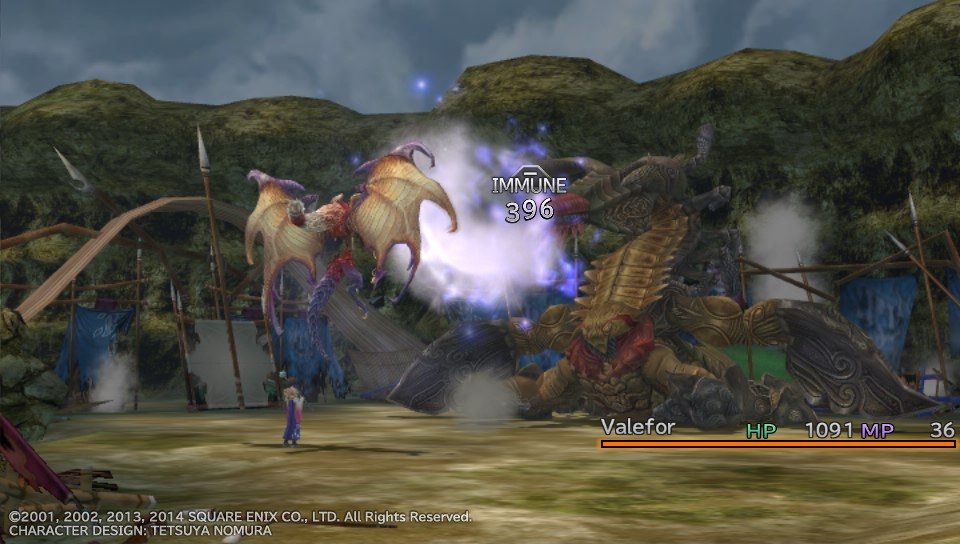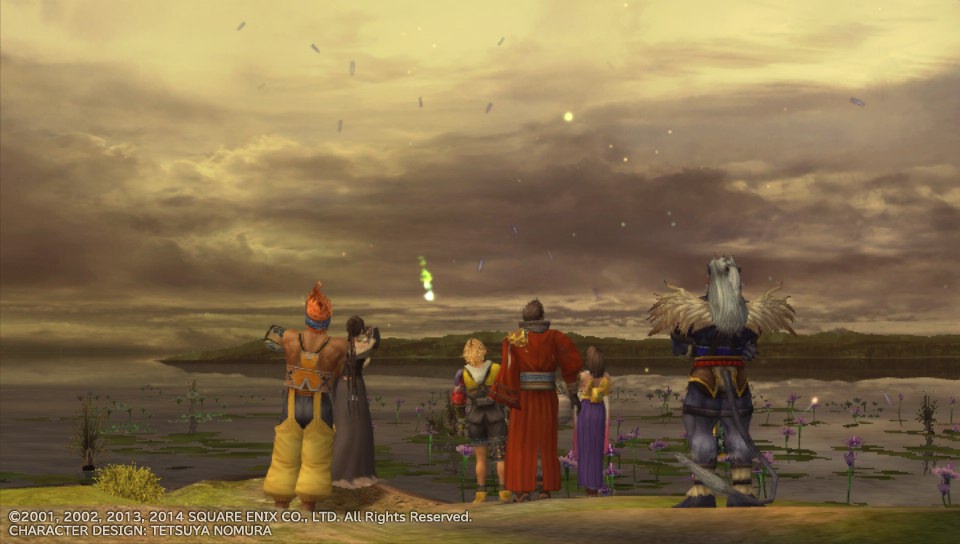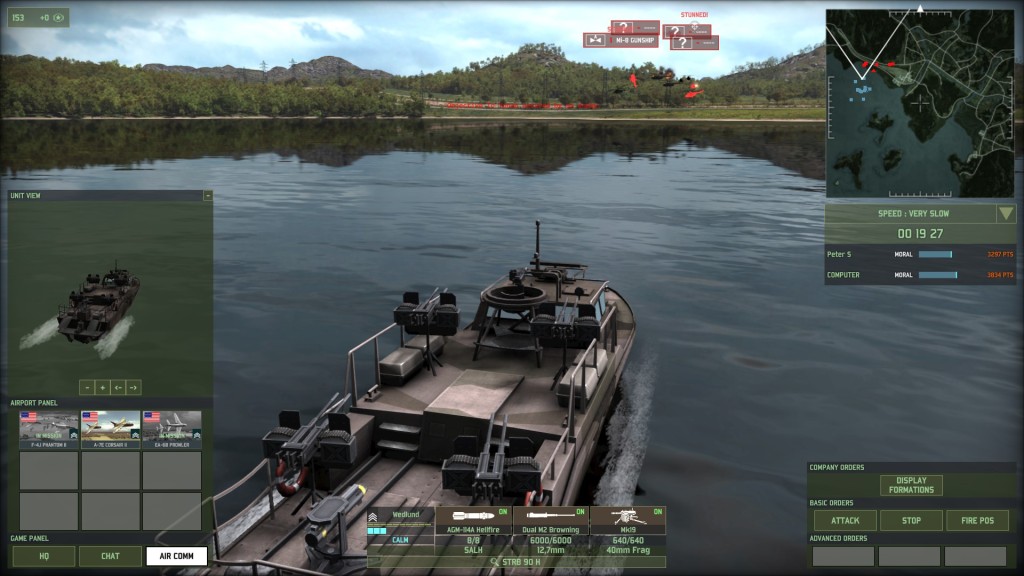This week’s song is the lovely main menu music of Child of Light, one of this year’s notable RPGs. It does double duty as the main character’s theme, and its motifs recur thoughout the game. Enjoy!
Month: May 2014
Warlock 2: Mage Versus World
My first scout killed some cockroaches and some wolves, then was mauled by a giant bear.
My second scout found some demonic trees and was turned into fertilizer before he could retreat.
My third scout killed some wolves and some weak spiders, reached level 3, and was immediately eaten by the giant killer spider lurking behind the weak spiders.
My fourth scout was diverted to help clean up a rogue infestation near my second city. After that he headed out into the fog and had dinner with some angry zombies. He was the main course.
My fifth scout killed the bear that killed my first scout, and discovered ogres. This was not a fortuitous discovery.
My sixth scout survived until the end of the game despite some hairy moments involving fire elementals, imps, vampire lords, sand golems…
My seventh scout found a trio of polar bearmen.
As the sequel to 2012’s Warlock: Master of the Arcane, Warlock 2 builds on that foundation and manages to make its predecessor all but obsolete. Warlock 2 offers most of 1‘s content, along with a bevy of new features, systems, modes, options and content. Unfortunately it also inherited the first game’s biggest flaw: weak AI opponents. As such, the game’s world is your main opponent, and what a hostile, merciless opponent it can be! The list above is a fairly standard record of the first 20 turns of my Warlock 2 games.
When I reviewed Warlock 1 at release I found it to be enjoyable, and a little unusual. It looked like Civilisation V, a similarity which only ran skin-deep. Far from being a 4X empire builder, it was a tactical wargame powered by copious magic, a hostile world, and unhinged comedy. Warlock 2 is no different, and in the crowded turn-based fantasy strategy game market of 2014 that’s all the more important. Warlock 2 is not directly comparable to Age of Wonders III, Endless Legend, Elemental, Eador, or any of the other releases which we’ve seen in the last year.
On holiday
Just a quick note that I’ll be on holiday for a few weeks, starting this Friday. The site won’t be dead in that time — I’ll schedule several Musical Mondays, along with links to a few old articles I’m still quite proud of. Two notable games are also scheduled to come out:
- Tropico 5 – I’ve just placed my pre-order!
- Distant Worlds: Universe – the final expansion pack to one of the most unique strategy games in existence. I really liked DW (as of several expansions ago), and I’m glad it will finally reach a wider audience on Steam.
Have fun while I’m away, and I’ll see you all soon!
I choose you! Combat in Final Fantasy X
In my last piece about Final Fantasy X, I wrote about its biggest draw: its world, its story, and the way the two interact. What makes FFX a good game, not just a good worldbuilding exercise, is the second thing it does well: combat.
The principles behind the combat system are straightforward, but implemented well:
1. It’s turn-based, with turn order depending on speed – zippy characters move more often than slower ones.
2. The active party comprises three characters (out of a total of seven playable), and in one of FFX’s most distinctive features, you can freely switch characters during battle.
3. Each character begins with a distinct role and a unique progression upon level-up (they can eventually mix and match, while an alternate game mode allows customisation from the outset).
The net effect is the best battle system I can remember in a numbered Final Fantasy. Battles are fast to play (which is important, given how frequent they are) and not very difficult – I think the only game over screen I’ve seen was the result of a boss fight. At the same time, they require the player to do more than simply mash “attack”, an area where all too many JRPGs fall down. At its simplest, this is due to the need to target the right enemy with the right character (compare Persona). For instance, veteran swordsman Auron hits hard but has difficulty connecting against flying enemies, so I use him against armoured, ground-bound enemies instead. If the only enemies left are fliers, or resist physical attacks, then out goes Auron and in comes the black mage. In a more complex fight, I might open by using a support character to buff the party, swap him out in favour of a debuff specialist (1), and finally swap in the damage dealers.
Clippings: Random Battles
I’m taking a break from strategy to progress through Final Fantasy X and Child of Light, and it strikes me that I really like both their battle systems. They manage to combine simplicity, speed, and enough depth to satisfy — I never feel as though I could coast through by hitting “attack” over and over again. I’m planning to write a couple of short articles examining them in more detail; for now, here is Siliconera’s take on what designers should avoid in their battle systems.
In other news:
- Veteran games writer Bruce Geryk now has his own site, and if you enjoy his specialties (strategy, military history, and wargames), it’s worth checking out! Bruce’s dissection of Master of Orion 3, from many years back, is still one of my favourite pieces of games writing — ever since I’ve read it I’ve wished for a “Crusader Kings 2 in space”.
- Several years back I wrote about Conquest of Elysium 3, a “3x” strategy game from the creators of Dominions, and the developers have now announced an Android tablet port, due out at the end of the month. This has promise, although the key question will be how well the interface will work on a tablet.
Musical Monday: “Frog’s Theme” (Chrono Trigger), composed by Yasunori Mitsuda
Chrono Trigger is another 16-bit classic whose soundtrack remains a delight, two decades on. It’s been remixed and fan-covered many times, and this week, I present Taylor Davis’ violin rendition of “Frog’s Theme” — Frog being one of your first party members, a knight who’s been transformed into a giant, bipedal… well, frog. Enjoy!
Final Fantasy X HD: The magic returns
Imagine being flung into an alien world, a thousand years hence. Imagine navigating a new society, with nothing left of your home but a few hauntingly familiar notes.
That is the premise of Final Fantasy X, whose Vita re-release (Final Fantasy X HD) is probably my favourite game this year. Imaginative and believable, the world of FFX stands head and shoulders over many other RPGs – its Final Fantasy siblings included. In fact, after 20 hours, I’d argue it outdoes the majority of games! Our window onto the story is Tidus: athlete, likeable if not especially bright goofball (1), and fish out of water. One day, he’s a champion blitzball player – think fantasy underwater soccer. The next, a monstrous fiend has levelled his city, and when he wakes, his home is no more than a myth.
Clippings: It’s Pretty!
How’s that for a striking visual style? The above trailer is for Apotheon, an upcoming side-scroller for PS4 and PC. I’m not very familiar with the game, but I applaud the developers’ decision to depict the world of Greek mythology world with art inspired by Greek vases.
Speaking of gorgeous games, you have to see Child of Light in motion — still screenshots don’t do it justice. I’ve just started the game on PS3, and so far it’s promising — stay tuned for more.
In this week’s links:
- Here is a preview of This War of Mine, an upcoming game that puts the player in charge of a group of civilians trying to survive in a war-torn city. I hope the developers will handle the subject respectfully and well; it’s a big break from gaming’s s typical power fantasies.
- Soren Johnson, the designer of Civ IV, speaks to Rock, Paper, Shotgun about his upcoming strategy game.
- Have you noticed that game protagonists are ageing in line with their creators? (Note the link contains spoilers for Final Fantasy X).
- An argument why we shouldn’t write off the Vita. And here is a look at some upcoming Vita indies. Looking at my own experience, I’ve used my Vita for JRPG re-releases (Persona 4 Golden, Final Fantasy X HD), exclusives (Gravity Rush, Tearaway) and one indie (the cute, charming Thomas was Alone). Do I wish there were more games for Vita? Certainly. But the combination of “core” titles, portability, and instant suspend/resume makes it ideal for busy gamers, and if a Vita port exists, then I will make that my version of choice.
If your Wargame ain’t broke…
The US Marines came ashore to find their enemy in disarray.
Before the first marine set foot on land, their escorting frigate swept the skies clear. Naval gunfire and wave after wave of Marine helicopters established a safe zone around the shore. Now, as the helicopters darted inland to cut off enemy reinforcements, the first Marine tanks lumbered off the beach, while their officers set up a command post behind them.
Everything was going to plan – better than planned. There was just one question: what were Swedish Navy gunboats doing in the Marine task force?
Welcome to Wargame: Red Dragon, the follow-up to my favourite game of last year, Wargame: AirLand Battle. Whereas AirLand Battle represented a huge upgrade from the first game in the series, European Escalation, Red Dragon is much more incremental, arguably closer to a stand-alone expansion than a whole new game. It offers plenty of new toys for the toy box, as well as some quality of life improvements (more details below), but the core mechanics are little changed from AirLand Battle.
As such, most of what I said about AirLand Battle still applies – this is a “beer and pretzels” Cold War military tactics game, comparable to a real-time Panzer General in the way it bridges the gap between traditional RTS (such as Company of Heroes) and dedicated simulations. Visually, it’s more spectacular than ever – see my above screenshot. Mechanically, it’s still the best RTS on the market, albeit weighed down by a steep learning curve and poor documentation (1). At this stage, AirLand Battle is more polished, and if you already own ALB, you can safely wait for a sale unless you are a series devotee like me. But taken in its own right, Red Dragon is a fantastic game that’s already given me many hours of enjoyment, whether in skirmish mode, the campaign, multiplayer (co-op or PVP), or simply theory-crafting in the armoury.
(1) The developers try their best, and they have made advances from game to game, but after three Wargame titles I feel safe saying this is not one of their strengths.
For series veterans, I elaborate below on what’s new:



